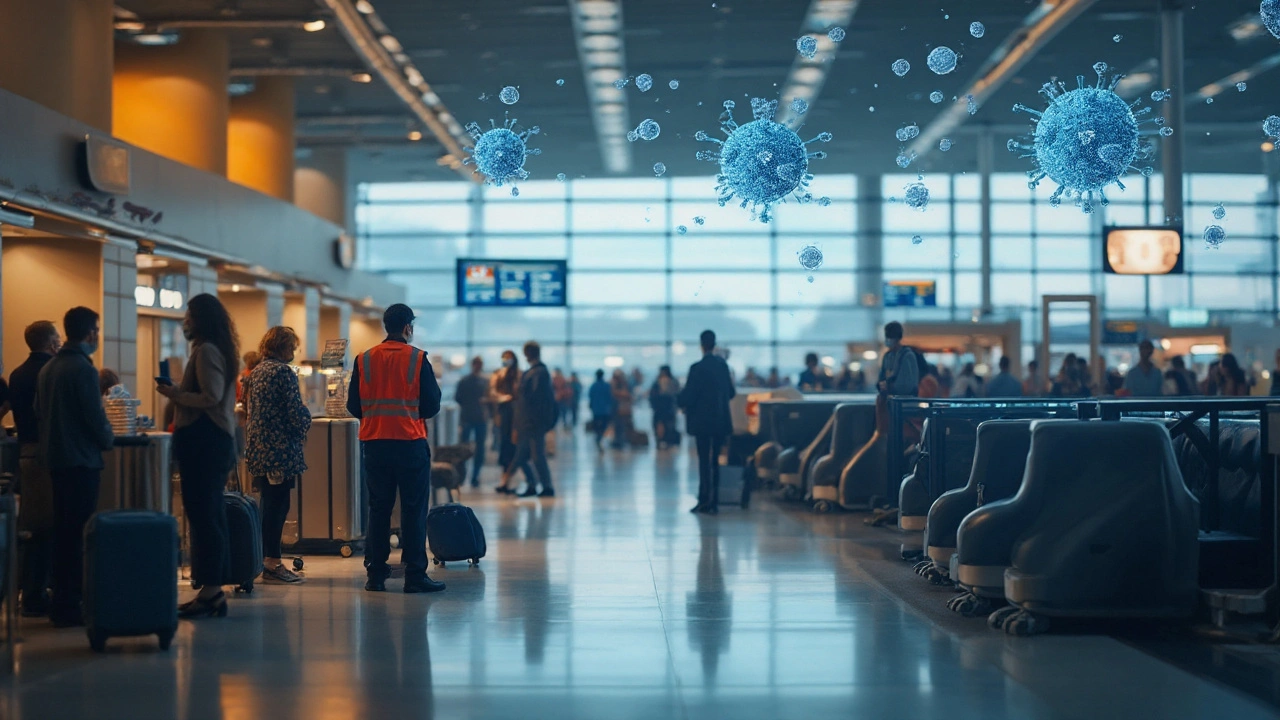
How Travel Fuels the Spread of Reemerging Influenza
Explore how modern travel accelerates reemerging influenza, the science behind virus spread, real‑world cases, and strategies to curb future outbreaks.
Air travel looks a lot different since the pandemic hit. Masks, temperature checks, and rapid tests have become part of the routine. If you’re planning a trip, you can stay comfortable and healthy by knowing what’s new and what still works well.
Airlines upgraded their cleaning crews and added UV light or HEPA filters to the cabin air system. That means most of the air you breathe is filtered every few minutes. Still, high‑touch surfaces like tray tables and armrests can collect germs, so many carriers now wipe them down between rows or provide disposable covers. Some airlines also limit the number of passengers to keep distance between seats. If you book early, you can often select a seat with an empty neighbor, which many people find reassuring.
Mask policies vary by carrier and country. While some airlines have dropped the mask rule for fully vaccinated travelers, others keep it in place for the whole flight. The safest bet is to carry a comfortable, reusable mask that fits snugly over both nose and mouth. If you need a mask upgrade, a surgical‑type or a KN95 will give you extra protection without hurting your breathing.
Before you even step into the airport, check the latest testing or vaccination requirements for both your departure and arrival sites. A simple rapid antigen test taken a day before travel can save you from a denied boarding. Keep the result on your phone and in a printed copy, just in case. Many airports now have self‑service health kiosks where you can scan your proof of vaccination or test result.
Once you’re in the terminal, use the hand‑sanitizer stations located near security checkpoints and gates. Carry a small bottle of 70% alcohol sanitizer to clean your seatbelt buckle, touch screen, and personal electronics. If you’re traveling with a child, a wipe‑down of the stroller or carrier seat can also lower risk.
During the flight, stay hydrated and move around when it’s safe. Drinking water helps keep your mucous membranes moist, which is a natural defense against viruses. When the seatbelt sign is off, walk the aisle for a few minutes to stretch and improve circulation. If you feel unwell, let the flight crew know right away – they’re trained to handle sick passengers discreetly.
After you land, keep wearing your mask until you’re out of the airport or have reached a secure, well‑ventilated space. If you’ve stayed in a hotel, wash your hands before unpacking and change clothes if you were in a crowded area. A quick shower can give you an extra feeling of cleanliness, but it isn’t required for safety.
Finally, give yourself some mental leeway. The extra steps can feel tiring, but they’re designed to keep you and the people around you safe. By staying informed, packing the right basics, and following a few simple habits, you can enjoy the excitement of travel without unnecessary worry.

Explore how modern travel accelerates reemerging influenza, the science behind virus spread, real‑world cases, and strategies to curb future outbreaks.